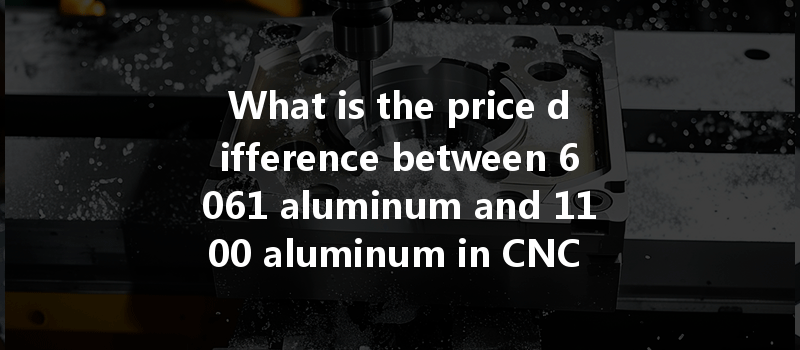In the world of CNC machining, selecting the right material can have a significant impact on the overall cost and performance of the final product. Among the myriad of alloys available, 6061 aluminum and 1100 aluminum are two commonly used grades that cater to a wide range of applications. Understanding the price difference between these two aluminum alloys is not merely an academic exercise—it is crucial for manufacturers, designers, and engineers intent on optimizing their production costs without compromising quality.
At YL Machining, we are committed to delivering precision machining services tailored to your specifications. This article delves deep into the cost variations of 6061 and 1100 aluminum and examines several factors that contribute to their pricing, including mechanical properties, applications, and machining considerations.
1.1 Composition and Properties
Aluminum alloys are categorized by their series numbers, which indicate their main alloying elements.
1.2 Mechanical Properties
The mechanical properties of the two alloys play a significant role in determining their cost and application suitability:
| Property | 6061 Aluminum | 1100 Aluminum |
|—————–|—————-|—————-|
| Yield Strength | ~250 MPa | ~90 MPa |
| Ultimate Tensile Strength | ~310 MPa | ~120 MPa |
| Elongation | 12-16% | 40% |
| Density | 2.70 g/cm³ | 2.70 g/cm³ |
Figures from the Aluminum Association (2023) illustrate that the substantial difference in yield strength and tensile strength directly translates into varying costs, as stronger materials usually require more sophisticated machining techniques or equipment.
1.3 Cost Basis of Aluminum Alloys
The cost of aluminum alloys can fluctuate based on multiple factors, including the global commodity market, alloying elements, and production methods. Typically, the higher the strength and complexity of the alloy, the higher the cost per pound.
2.1 Price Per Pound
As of October 2023, the average price of these aluminum alloys can be summarized as follows (prices may vary based on market fluctuations):
The price difference between the two is primarily due to the additional alloying elements in 6061 and its enhanced mechanical properties.
2.2 Fabrication Cost Considerations
Beyond raw material costs, fabricating parts from either alloy introduces additional expenses:

3.1 Market Demand and Availability
The price of aluminum alloys is influenced by supply and demand dynamics. High demand noted in industries such as aerospace, automotive, and construction can lead to price surges.
3.2 Geographic Location
The geographical location of procurement, machining, and distribution can also play a pivotal role in overall pricing. Areas closer to aluminum refineries may have lower transportation costs, which could favorably influence pricing.
3.3 Alloy Certification and Quality Standards
Certain projects may require specific certifications (e.g., ASTM or ISO certifications) for materials. The expenses incurred to meet these standards can add to the overall price, particularly for 6061, which is often utilized in critical applications.
4.1 Applications of 6061 Aluminum
6061’s versatility makes it suitable for numerous demanding applications, including:
4.2 Applications of 1100 Aluminum
On the other hand, the applications of 1100 aluminum primarily include:
4.3 Economic Implications of Application Choices
Choosing between the two alloys not only impacts material costs but also the pricing of the final product. A project that mandates the use of 6061 may result in higher overall costs due to its expensive material and processing requirements.
When contemplating the price differences between 6061 aluminum and 1100 aluminum in CNC machining, one must prioritize various factors including material properties, fabrication requirements, and application suitability. While the costs may vary significantly—with 6061 generally being more expensive—each alloy is designed to serve distinct needs across various industries.
At YL Machining, we recognize the importance of selecting the right material for your machining projects. Our expertise allows us to guide you in making informed decisions that optimize both your productivity and your budget.
In summary, understanding these price distinctions can significantly impact project outcomes—from budgeting for material costs to determining the feasibility of specific manufacturing processes.
—






